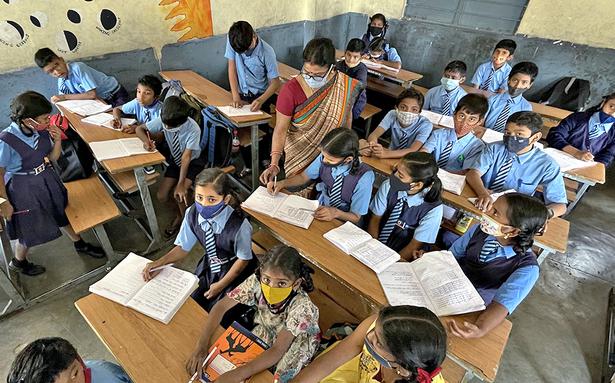[ad_1]
The government expenditure in India on early childhood education (ECE) for children between the age of three years and six years is a mere 0.1% of the GDP, and the average spend per child of ₹8,297 per annum is at least a fourth of desired levels, according to a new study.
The research conducted jointly by the Centre for Budget and Governance Accountability (CBGA) and commissioned by Save The Children was released on Tuesday. It claims to be the first-ever attempt to estimate the cost of universalisation of ECE services in India.
It calculates that the Union government and State governments allocated 0.1% of the GDP in the financial year 2020-2021, which was equivalent to 0.39% of the country’s total budgetary outlay. Government expenditure on ECE as percentage of GDP in UK was 0.22%, USA 0.33%, Germany 0.49%, Finland 0.71, even though India had a much higher population of children in the age group of three to six years at 99 million, according to Census 2011.
The analysis by CBGA also estimates that public provisioning for ECE in India was to the tune of ₹25,000 crore. The all India average per-child allocation is ₹8,297. However, allocation varies across States and was the lowest in Meghalaya (₹3,792) and the highest in Himachal Pradesh (₹34,758).
Currently, only 32% of all children in the age group of three-six years or 31.4 million children receive ECE services through anganwadi under the Integrated Child Development Schemes and pre-primary sections at schools under Samagra Shiksha scheme of the Ministry of Education. The study provides approximate estimation of the cost of bringing the remaining 68% children also under the government coverage. To do so, it provides three scenarios — quality ECE for all children, only for those not availing government schemes and those not receiving any ECE services — and concludes that the total budget allocation should be in the range of 1.6-2.2% of GDP.
The average projected cost per child, per year, for quality ECE services is in the range of ₹32,531 (feasible cost) to ₹56,327 (optimal cost). The actual cost within this range will depend on the type of model adopted for implementation such as pre-primary classes run privately or by NGOs or by the government.
The National Education Policy 2020 aims to universalise ECE by 2030 in line with Sustainable Development Goal 4.2. It states that the National Council of Educational Research and Training (NCERT) will create a National Curricular and Pedagogical Framework for ECCE (NCPFECCE) for early childhood learning to guide teachers and stresses on the need for developing a workforce trained for ECE. However, it doesn’t discuss the cost involved to realise the vision which is what the report seeks to address.
The report also makes several suggestions such as the need for mapping access and quality, implementation of SARTHAQ proposed for developing a robust online mechanism by 2021-2022 to monitor time fund flow for ECE programmes, minimum qualifications mandated for teaching staff in early childhood settings and raising unit costs of components under the scheme such as norms for infrastructure development and maintenance, rent of centres, education material, salaries, furniture, etc.
The report has analysed the Annual Workplan and Budget for Samagra Shiksha Abhiyan and Annual Project Implementation for ICDS and National Health Mission as well as budges approved across different components for all States and Union Territories. It also examined Annual Reports of the relevant ministries, minutes of the Project Approval Board (PAB) meetings, Lok Sabha questions and data from the Unified District Information System for Education .
[ad_2]
Source link








